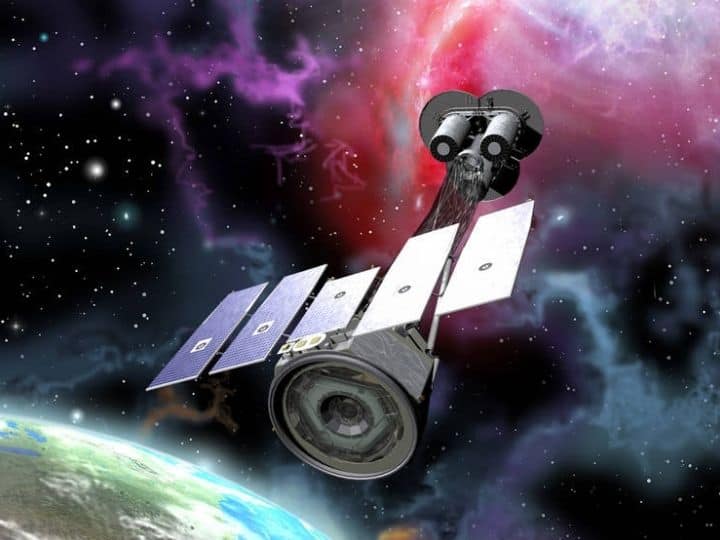NASA Now Has Its 'X-Ray Eyes On The Universe'. Know What IXPE Will Do In Space | EXPLAINED
IXPE, dubbed as NASA's newest set of 'X-ray Eyes on the Universe', will help scientists unravel the mysteries of the cosmos by studying different wavelengths and properties of light.

New Delhi: NASA’s Imaging X-Ray Polarimetry Explorer (IXPE) spacecraft lit up the early morning Florida sky as it lifted off atop a SpaceX Falcon 9 rocket from Kennedy Space Center’s Launch Complex 39A, on Thursday, December 9, at 1:00 am EST (11:30 am IST). IXPE is NASA's first satellite dedicated to measuring X-ray polarisation.
It is also the first mission that will map the polarisation of some of the most energetic objects in the universe, such as the remains of huge stars that exploded into supernovae, the supermassive black holes at the centres of galaxies, including Sagittarius A* at the centre of the Milky Way, remnants of neutron stars and black holes, powerful particle jets coming out from feeding black holes, and pulsars, which are the dense remains of cosmic objects that were once stars.
Dr. Martin Weisskopf, IXPE’s principal investigator, said the launch of IXPE marks a bold and unique step forward for X-ray astronomy.
Polarisation is a property of light that depicts the direction of their oscillations and holds clues to the environment from which the light originates. Polarised light oscillates or vibrates in only one direction.
X-ray polarisation is a process in which the paths of electrons moving close to the speed of light are bent by a magnetic field, as a result of which the electrons start spiralling, and emit photons in the process, the electromagnetic field of which vibrates in one direction, or gets polarised.
IXPE, which is a collaboration between NASA and the Italian Space Agency, will explore some of the most extreme and mysterious objects in the universe, and study the X-rays emitted by them in a new way, NASA said on its website. The US space agency selected IXPE as a Small Explorer mission in 2017.
How Will IXPE Work?
IXPE, dubbed as NASA's newest set of 'X-ray Eyes on the Universe', will help scientists unravel the mysteries of the cosmos by studying different wavelengths and properties of light.
X-rays come from the hottest places in the Universe, such as regions where power explosions and violent collisions occur, or where strong magnetic fields are present. IXPE can track clouds of gas heated to millions of degrees and detect the shower of particles fueled by a black hole that is engulfing matter. The spacecraft will measure the orientation of X-rays from some of the most brilliant objects in space, which consist of moving electric and magnetic fields. X-rays can be collected only by telescopes in space because the Earth’s atmosphere blocks cosmic X-rays from reaching the ground.
Usually, the peaks and valleys of these waves move in random directions, but polarised light is more organised, with the two types of waves vibrating in the same direction. In space, light becomes polarised depending on where it comes from, and what it passes through. Measuring the amount and direction of polarisation of X-rays, IXPE will give scientists clues about the shapes, structures, and behaviour of all types of celestial objects that emit bright X-rays, and the physics of how X-rays came to be.
Instruments Aboard IXPE
The IXPE observatory has three identical state-of-the art telescopes with three main parts. These are: Mirrors, Detectors, and an Extendable Mast. Each mirror assembly contains 24 nested, cylinder-shaped mirrors that collect and focus X-rays. Located at the focal point of the mirrors, polarisation-sensitive detectors are the secret behind IXPE's unique X-ray vision. The detectors will take a picture of incoming X-rays, and measure all four properties of the rays, which are: arrival time, direction, energy, and polarisation of light.
Over the course of its two-year primary mission, IXPE will observe more than 50 brilliant objects. These observations will help scientists tackle long-standing puzzles like testing computing stories about pulsars and the details about how Einstein's Theory of General Relativity works.
IXPE’s polarisation measurements will also hold clues to questions such as, what the spin of a black hole is, what powers the mysterious brightness of pulsars, and whether the understanding of the fundamental laws of physics hold up throughout the whole Universe.
Related Video
Southern Rising Summit 2024: How Important is Self-Awareness? Insights from Anu Aacharya | ABP LIVE






































